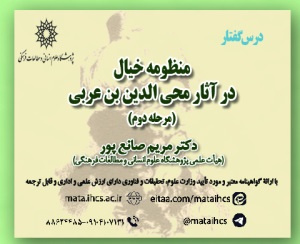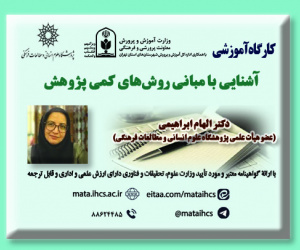واکاوی تولید فضا و شکل گیری پهنه های دانش بنیان با استفاده از نظریۀ هنری لوفور (مطالعه موردی: منطقۀ ساحلی ات ساین 22 بارسلونا) (مقاله علمی وزارت علوم)
درجه علمی: نشریه علمی (وزارت علوم)
آرشیو
چکیده
امروزه توسعه شهرهای دانش بنیان به یکی از راهبردهای توسعه فراگیر و یکی از مؤثرترین پارادایم های شهرهای پایدار آینده تبدیل و هزاره جدید به نام عصر شهرهای دانش بنیان نام گذاری شده است. با وجود این، تولید فضا در شهرهای دانش بنیان، الزامات خاص خود را دارد. بر همین اساس هدف پژوهش حاضر، واکاوی تولید فضا و شکل گیری پهنه های دانش بنیان با استفاده از نظریه هنری لوفور است. پژوهش حاضر از نوع نظری-بنیادی و روش آن، توصیفی-تحلیلی است. هستی شناسی پژوهش حاضر، ترکیبی از عوامل فیزیکی، ذهنی و زیسته و شناخت شناسی آن تأویلی و تفسیری است. نتایج پژوهش نشان دهنده آن است که بر اساس نظریه هنری لوفور، تولید فضا در شکل فیزیکی (تبدیل منطقه بندی محدوده از «22 ای» (صنعتی) به «22 ات ساین » (فعالیت های بهره ورانه جدید دانش بنیان)؛ ایجاد پهنه ای بر مبنای کاربری ترکیبی، تنوع، فشردگی و تراکم شهری؛ ایجاد خوشه های مختلف مشتمل بر انرژی، رسانه، فناوری اطلاعات و ارتباطات و فناوری پزشکی و راه اندازی سامانه ات ساین 22 کارآفرینان؛ بارسلون اکتیوا، مرکز رشد بارسلون و پالتفرم های لندینگ ات ساین 22، ذهنی (انطباق بافت جدید با اقتصاد جدید؛ جذاب نمودن فضا برای جذب نخبگان، انعطاف پذیری بلند مدت و تضمین پایداری در آینده؛ نقش برنامه ریز و تسهیل بخش دولت و شهرداری؛ سابقه شهر بارسلونا در زمینه کاربست کاربری ترکیبی و صنایع خلاق) و زیسته (ساختمان مدیاتیک به عنوان مرکز ارتباطی و نقطه ملاقات برای مشاغل، دانشجویان، کارآفرینان، مراکز تحقیق و توسعه و مؤسسات فناوری اطلاعات و ارتباطات؛ ترویج رویداد برکفست آپدیت ات ساین 22 جهت ایجاد ارتباط متقابل بین جامعه متخصصان و ایجاد احساس تعلق به مکان؛ اجرای برنامه هایی مانند منطقه دیجیتال جهت آشنا نمودن پدربزرگ ها و مادربزرگ ها و والدین منطقه با برنامه های آموزشی دیجیتال؛ تأسیس پردیس شهر هوشمند، جهت ایجاد فضای جدیدی برای نوآوری شهری از طریق گردهم آوردن شرکت ها، مؤسسات، دانشگاه ها و مراکز تحقیقاتی فناوری اطلاعات و ارتباطات، اکوسیستم های نوآوری و برنامه ریزی شهری) در پهنه های دانش بنیان اتفاق افتاده است.Exploring the Production of Space and Formation of Knowledge-based Zones Using Henri Lefebvre's Theory (Case Study: Coastal district of 22@, Barcelona)
Nowadays, the development of knowledge-based cities has become one of the pervasive strategies for sustainable urban development and one of the most effective paradigms for future sustainable cities. In fact, the new millennium has been designated as the era of knowledge-based cities. However, the production of space in knowledge-based cities has its own requirements. Therefore, this research aimed to explore the production of space and the formation of knowledge-based zones using Henry Lefebvre's theory. The research was theoretical-foundational in nature, and its method was descriptive-analytical. The ontology was a combination of physical, mental, and organic factors, and its epistemology was interpretive and hermeneutic. The results of the research indicated that, based on Henry Lefebvre's theory, the production of space in knowledge-based cities includes physical aspects such as transforming the zoning of an area from "22i" (industrial) to "22 @" (new knowledge-based activities), creating zones based on mixed land use, urban diversity, density, and compactness, establishing various clusters consisting of energy, media, information and communication technology, and medical technology, and launching the 22@ Entrepreneurship System, Barcelona Activa, and Landing Platforms. Furthermore, it encompasses mental aspects such as adapting the new fabric to the new economy, making the space attractive for attracting elites, long-term flexibility, and ensuring sustainability in the future, as well as the role of urban planners and facilitators, and Barcelona's history in the application of mixed land use and creative industries. Additionally, the organic aspects include the creation of a mediatheque building as a communication center and meeting point for professionals, students, entrepreneurs, research and development centers, and information and communication technology institutions; promoting the Breakfast Update event 22@ to establish mutual communication between the specialist community and creating a sense of belonging to the place; implementing programs such as the Digital District to familiarize the older generation with digital educational programs; establishing a smart city campus to create a new space for urban innovation by bringing together companies, institutions, universities, and research centers in the field of information and communication technology; and fostering innovation ecosystems and urban planning within knowledge-based zones. Extended Abstract Introduction Numerous studies have been conducted on knowledge-based cities, including stakeholders and drivers of the knowledge city, the evolution of the city as a platform, smart governance in urban development with the platform of knowledge-based urbanism, the role of innovation in knowledge-based city development, knowledge as a holistic approach to future urban development, knowledge cities and innovation spaces. These studies have been conducted in various countries such as Romania, Australia, Malaysia, and Brazil. However, none of the previous studies specifically addressed the analysis of the formation of knowledge-based areas and their relationship with space production using the theory of Lefebvre. Among the theorists who have theorized about space and its construction, Lefebvre is the only one who sees space construction as a result of deliberate and predetermined policies of governments. Also, the 22@ in Barcelona is the result of a top-down approach implemented by government policies and urban planning. In fact, the feasibility and construction of the 22@ in Barcelona are influenced by government policies and the political and economic structure. In other words, space and its construction in 22@ Barcelona represent a complex and multidimensional political and economic process. Furthermore, the space construction is a result of the pressures of globalization and the need for increased competitiveness as the main driver of the new economy, which Barcelona has undertaken to enhance its economic, social, and cultural position. The use of Lefebvre's theory in understanding the government intervention in creating social space in urban economies provides a necessary and critical tool through which various policies and their orientations can be analyzed. Therefore, this study aimed to utilize Lefebvre's theory of space production in analyzing the formation of knowledge-based zones, with a focus on 22@ in Barcelona.MethodologyThe research method was descriptive-analytical. Documentary and library methods have been used to collect data. The study has focused on reviewing relevant sources and references, knowledge-based mapping in the case study, statistics, books, and websites related to the research topic. Since the current research aimed to explore the nature of the formation of knowledge-based spaces and the relationships between components and variables, and it contributed to the development of the scientific boundaries of geography, it fell under the category of theoretical-foundational research. In terms of intellectual foundation and theoretical basis, it has been formulated based on Henry Lefebvre's theory of the space production and its main components, namely physical space, mental space, and lived space. In fact, the ontology of the current research was a combination of physical, mental, and lived factors, and its epistemology was interpretive and hermeneutics.Results and discussionThe research results indicated that based on Lefebvre's theory, the space production has occurred in physical form (transforming the zoning of the area from "22i" (industrial) to "22@" (new knowledge-based profitable activities), creating a zone based on mixed land use, diversity, urban density, and clustering different sectors such as energy, media, information and communication technology, medical technology, and the establishment of the 22@ entrepreneurs system (Barcelona Activa, Barcelona Growth Center, and landing platforms); mental aspect (adaptation of the new structure to the new economy, making the space attractive for attracting elites, long-term flexibility, and ensuring future sustainability); the role of urban planners and facilitators from the government and municipality; the historical background of Barcelona in the implementation of mixed land use and creative industries; in the lived aspect (the construction of the Mediatheque as a communication center and meeting point for businesses, students, entrepreneurs, research and development centers, and information and communication technology institutions); the promotion of the 22@ Update Breakfast event to establish mutual connections among the community of experts and create a sense of belonging to the place; the implementation of programs such as the Digital District to familiarize grandparents and parents of the area with digital educational programs, and the establishment of a smart city campus to create a new space for urban innovation by bringing together companies, institutions, universities, and research centers in information and communication technology, innovation ecosystems, and urban planning have occurred in knowledge-based zones.ConclusionThe innovation and knowledge-based district of Barcelona @22 has been designed based on three physical, mental, and lived spaces. Within this framework, political will and leadership are essential features, as the development of each of these spaces guides the next stage of innovation. Strong political commitment and decision-making are necessary in the early to middle stages of development in order to transform innovation areas into self-reinforcing and sustainable innovation ecosystems. Within the framework of the innovation district, each of the innovation spaces interacts with one another and creates feedback loops that enhance the innovation capacity of a place. The innovation district is a multidimensional innovation ecosystem in which different innovation spaces interact with each other. In this multidimensional ecosystem, large and exceptional projects are shared with the aim of significantly changing the structure of society and the city while simultaneously producing and developing physical, mental, and social spaces. Space production plays a crucial role in this ecosystem's integrated strategy, designed to attract, retain, and nurture talents, improve networks and communication flows among innovators, and also transform the area into an attractive destination. Overall, the model of space production and the formation of knowledge-based zones, using Henry Lefebvre's theory, is a model of public management that combines strategic vision, political leadership, professional management, innovation, and participation with proximity to citizens, civic culture, citizen participation, and quality. The foundation of this model is based on strong political will, desire, decision, and commitment to realizing a knowledge-based city, which takes shape in the form of changing the land use and function of the area, aligning it with the new urban economy. In parallel with the ideology and prevailing thinking in the space, conceptual discourses for space production, maps and signs, scientific theories, and space production ideas, and ultimately the existing symbols in the space (monuments, city signs) represent the space. Additionally, the mental space of policymakers and planners, in the form of planning, process development, scheduling, and policy documents, significantly contributes to space production. Finally, governance and management based on elites, professionalism, competent individuals, and knowledge-based mechanisms create consensus and trust among residents for participation, partnership, interaction, and close communication with urban management, which provides a suitable living environment for residents.Funding There is no funding support.Authors’ ContributionAuthors contributed equally to the conceptualization and writing of the article. All of the authors approved the content of the manuscript and agreed on all aspects of the workConflict of Interest Authors declared no conflict of interest.Acknowledgments We are grateful to all the persons for scientific consulting in this paper.






